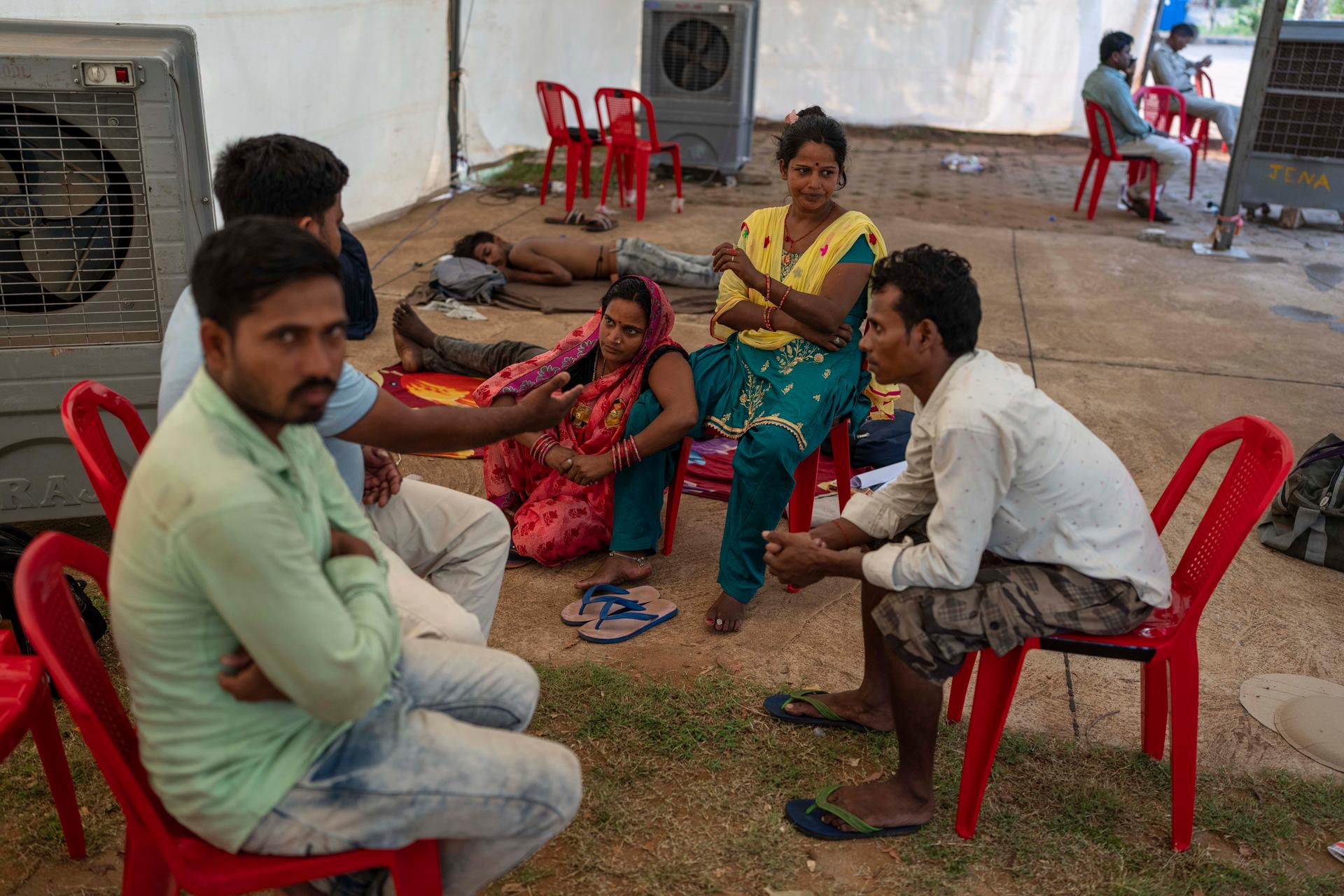Investigation begins into India’s deadly train crash
Four days after a deadly train collision in India’s eastern state of Odisha left more than 275 people dead and thousands more injured, the country is still reeling.
Though rescue efforts are winding down, families of victims are still desperate for information as the focus shifts to investigating the cause of one of the worst crashes in India’s history. India’s top investigative agency opened an official inquiry on Tuesday into whether the crash could be attributed to criminal activity.
The crash on Friday evening occurred when a crowded passenger train in Balasore District suddenly diverted onto a different track, where it collided with a parked freight train at 80 miles an hour. The impact sent several of its coaches veering onto a neighboring track; and then, they crashed into a third train moving in the opposite direction.
One survivor told Indian broadcaster NDTV about the horrifying minutes after the crash: “When I came out of the coach, I saw limbs scattered all around. A leg here, a hand there. Someone’s face was disfigured.”
A full-scale rescue operation was in place through Saturday, as the Indian Army, National Disaster Response Force, police and other rescue teams desperately hunted for survivors. Two hundred ambulances shuttled survivors to hospitals as sniffer dogs surveyed the wreckage for bodies. Since then, families have rushed to hospitals for news of their loved ones, and 100 bodies still remain unidentified.
On Saturday, India’s Prime Minister Narendra Modi visited the accident site and offered his condolences to the grieving families.
“The people we have lost, we will not be able to bring them back,” he said. “But the government is with their families in their grief.”
The prime minister promised that those responsible will be severely punished. The government also said that victims will be compensated — $12,000 for the families of those who died, with smaller amounts for those who were injured.
Many will need this financial support. It’s likely that a large number of migrant laborers who support their families through low-wage jobs were on the train.
Swapnil Garg, a former officer of the Indian Railway Service of Mechanical Engineers, said, “Indian Railways are the lifeline of India. It is the most affordable mode of transport, most convenient mode of transport, and just about available everywhere.”
Railway safety
In the aftermath of the collision, there are renewed calls for improving safety for the 13 million riders who use the railways each day. Many experts say the railways don’t have enough staff to meet the high demand. There’s simply too much strain placed on a network originally built in the British colonial period in the 19th and 20th centuries.
Although Garg said that he feels railway officials do prioritize safety, he added: “If you run a system at 100%, 100% of the time, then it’s going to break.”
However, high capacity and understaffing are not the only issues. In recent years, the government has invested in flashy, new infrastructure projects, while an auditor general report found that funding for safety measures has been reduced. In fact, before the train collision led him to travel to Odisha, Modi had been slated to inaugurate a new, semi-high-speed train in the western state of Goa.
This has prompted some railway experts to argue that large-scale government funding would be better spent improving safety of the existing trains.
Still, the network that carries 8 billion people to their destinations each year has become a lot safer with time. In 2020, the government announced that for the second year in a row, there were zero passenger deaths due to train accidents.
Investigating the collision
Since Friday’s tragedy, the government has faced mounting pressure to explain what happened.
Railway Minister Ashwini Vaishnaw asked for patience while facing calls for his resignation: “Let the inquiry report come out. But the cause of the accident has been identified, and the people responsible have been identified.”
Critics say that anti-collision technology, known as the kavach system, (which means “armor” in Hindi) could have prevented the accident. But so far, it has only been added to 2% of the tracks.
For his part, Vaishnaw said the technology would not have stopped the disaster. Instead, he announced that the error was caused by the train’s “electronic interlocking system.” That signaling system may have mistakenly led the first train to steer onto the wrong track.
Additionally, the government took the unusual step of asking the Central Bureau of Investigation (CBI) to look into the collision. On Tuesday, the CBI officially took over the investigation, sending officials from the bureau to examine the crash site.
The CBI’s involvement suggests that the government is considering whether this was negligence or sabotage. Jairam Ramesh, a leader of the opposition Congress Party, has criticized the move, calling it “nothing but headline management.”
Meanwhile, family members press for answers and accountability while still searching for their missing loved ones.
